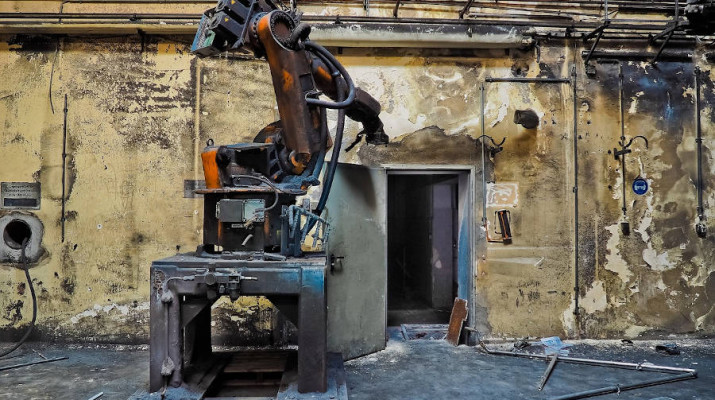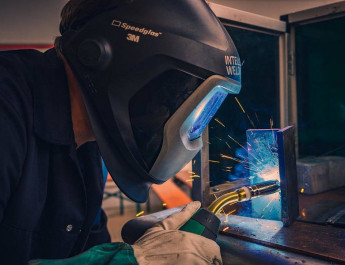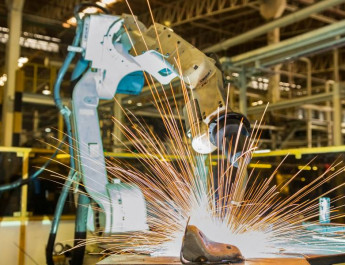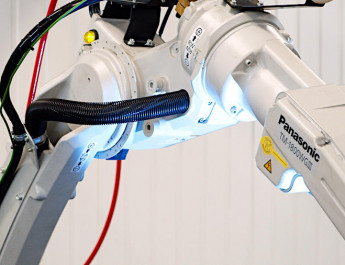The field of welding has undergone a revolutionary transformation with the advent of robotic welding. This innovative technology has not only enhanced efficiency and precision but has also redefined the landscape of manufacturing industries. In this article, we will delve into the fascinating history of the development of welding robots, tracing their evolution from humble beginnings to the sophisticated systems that drive modern manufacturing processes.
Early Days: The Birth of Robotic Welding
Origins in the 1960s
The journey of robotic welding began in the 1960s when researchers and engineers first explored the idea of automating welding processes. The automotive industry, with its increasing demand for efficiency and quality, became the breeding ground for early experiments with welding robots. The General Motors Corporation, in collaboration with American inventor and engineer George C. Devol, developed the first industrial robot named Unimate, which laid the foundation for robotic welding.
Unimate’s Role in Pioneering Robotic Welding
Unimate, introduced in 1961, was a landmark achievement that showcased the potential of robotics in welding applications. Developed by Devol and entrepreneur Joseph F. Engelberger, Unimate was initially employed for tasks like die casting and spot welding in the automotive sector. Its success paved the way for further research and development in the field of robotics.
Advancements in the 1970s and 1980s
Expansion of Applications
The 1970s witnessed a significant expansion of robotic welding applications. Manufacturers began adopting robotic systems for a broader range of welding processes, including arc welding, resistance welding, and gas metal arc welding (GMAW). As the technology matured, the versatility of robotic welding systems became apparent, leading to their integration into various industries beyond automotive manufacturing.
Technological Improvements
The 1980s marked a period of rapid technological advancements in robotic welding. The introduction of computer numerical control (CNC) systems and improved sensors enhanced the precision and reliability of robotic welders. These innovations allowed robots to adapt to different welding tasks with greater accuracy, making them more appealing to a diverse range of industries.
1990s to Present: The Era of Precision and Integration
Programmable Logic Controllers (PLCs) and Advanced Controls
In the 1990s, the integration of programmable logic controllers (PLCs) brought a new level of sophistication to robotic welding. PLCs enabled more precise control over welding parameters, leading to higher-quality welds and increased efficiency. The ability to program complex welding sequences made robots adaptable to intricate welding tasks in industries such as aerospace and shipbuilding.
Sensing and Vision Systems
The integration of advanced sensing and vision systems in the 2000s further elevated the capabilities of robotic welding. Robots equipped with sensors and vision technology could now analyze the work environment in real-time, adjusting to variations in material thickness and joint geometry. This development significantly reduced the need for manual intervention, resulting in higher productivity and improved weld quality.
Collaborative Robots (Cobots)
In recent years, the emergence of collaborative robots, or cobots, has added a new dimension to robotic welding. Cobots are designed to work alongside human operators, enhancing safety and flexibility on the shop floor. This collaborative approach has gained traction in small and medium-sized enterprises, where the ease of programming and deployment makes robotic welding more accessible.
Future Trends and Challenges
As we look ahead, the future of robotic welding holds exciting possibilities. Artificial intelligence (AI) and machine learning are expected to play a crucial role in further enhancing the capabilities of welding robots. Predictive maintenance, adaptive learning, and increased autonomy are anticipated trends that will continue to redefine the landscape of robotic welding.
However, challenges such as the high initial cost of robotic systems, the need for skilled technicians, and concerns about job displacement remain significant. Addressing these challenges will be crucial for the widespread adoption of robotic welding in industries worldwide.
Conclusion
The history of robotic welding is a testament to human ingenuity and the relentless pursuit of efficiency in manufacturing. From the pioneering days of Unimate to the sophisticated robotic systems of today, the journey has been marked by continuous innovation. As we stand on the cusp of a new era in manufacturing, the role of robotic welding is poised to become even more integral, driving advancements in technology and reshaping the future of welding processes across diverse industries.
Source: metalmag.eu.



